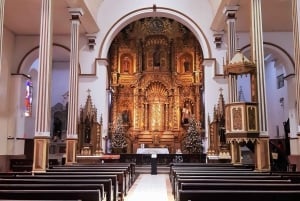Casco Viejo
Casco Antiguo (Old town)
Historical and Cultural Sites
Things to do in Panama
It remained the center of Panamanian life for almost 300 years, until 1930, when the Casco Antiguo began to decline in a rather regional trend that included several old neighborhoods in Latin America where its wealthy population began to move to the suburbs.
The reasons for this exodus were typically attributed to the emergence of the automobile, which made life in the suburbs easier and life in the center of the city more difficult. In the case of Casco Viejo, these pressures were exacerbated by the fact that the boundaries of the Panama Canal Zone - of which Panamanians were excluded - were designed in such a way that they isolated the Casco from the rest of the city, leaving only a thin access street to enter and exit.
The delivery of the Panama Canal in 1999 and the designation of UNESCO as a World Heritage Site in 1998 marked the beginning of an era of revitalization on the part of the government, businessmen and international organizations.
Why UNESCO thought the helmet was special During its 300 years as the heart of Panamanian life, this peninsula developed a unique legacy of Spanish, French, American Colonial, Neoclassical and Art Nouveau architecture. Certain styles, particularly between the 16th and 18th centuries, created houses with internal patios, which are specific to the region. So, despite the fact that people refer to Casco Viejo as a 'colonial city', in reality its current architecture is dominated by French and Republican styles, which UNESCO points out as one of the points within its justification for the designation as a World Heritage Site since 'it lends a special quality that other colonial cities in Latin America lack (with the exception of New Orleans, where the quality of architecture is markedly inferior).'
UNESCO made a clear connection between this eclectic collection of architectures and styles with the historic role of Panama as a meeting point, with each style representing a boom in interoceanic trade across the Isthmus. This collection of architectures and the people who inhabited it are a clear reflection of the fascinating cultural kaleidoscope of Panama and its important role in our common heritage.
What has happened and what is happening Even though a lot has been done, there is still a lot to do. Both the public and private sectors have restored buildings that nowadays contain government ministries, museums, the Presidential Palace, embassies and churches, at the same time as some of the best homes, bars and restaurants in Panama City.
Simply walking through the streets and taking in the scenes a great way to spend the day.
Highly recomended!
